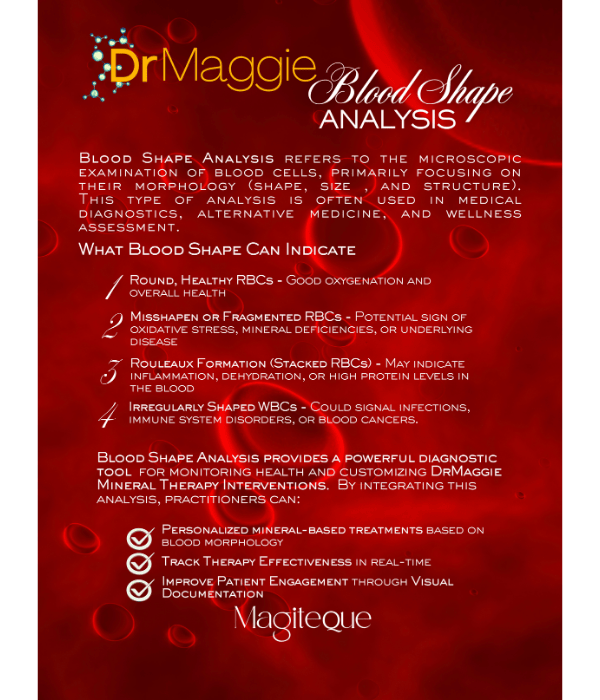DrMaggie Blood Shape Analysis
Physical Feature Significance Before and After Treatment
Prior to treatment, the blood cells may exhibit irregular shapes, such as elongated or fragmented forms, which can indicate underlying health conditions such as anemia or other blood disorders. After treatment, a return to the typical biconcave disc shape of healthy red blood cells can signify improved health and effective response to treatment.
Before treatment, there may be noticeable variability in the size of blood cells, known as anisocytosis, which can be a marker for nutrient deficiencies or other medical conditions. Successful treatment often results in a more uniform cell size, suggesting a balanced physiological state.
Blood cells that appear pale (hypochromic) before treatment might indicate low hemoglobin levels. Post-treatment, a richer red coloration, indicating increased hemoglobin content, often reflects successful management of the condition.
An imbalance in the number of specific blood cell types, such as an excess of white blood cells or a deficiency in red blood cells, can be observed before treatment. After treatment, a more balanced cell count and distribution typically points to restored immune function and overall health.
Before treatment, the presence of abnormal cells, such as sickle cells or blasts, can be indicative of serious health issues like sickle cell anemia or leukemia. Effective treatment should result in a reduction or complete absence of these abnormal cells in blood samples.

